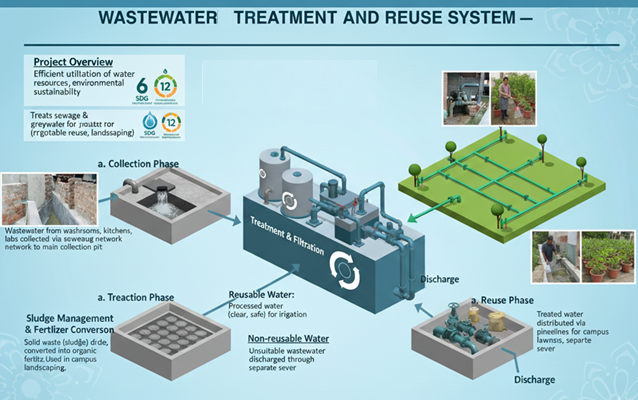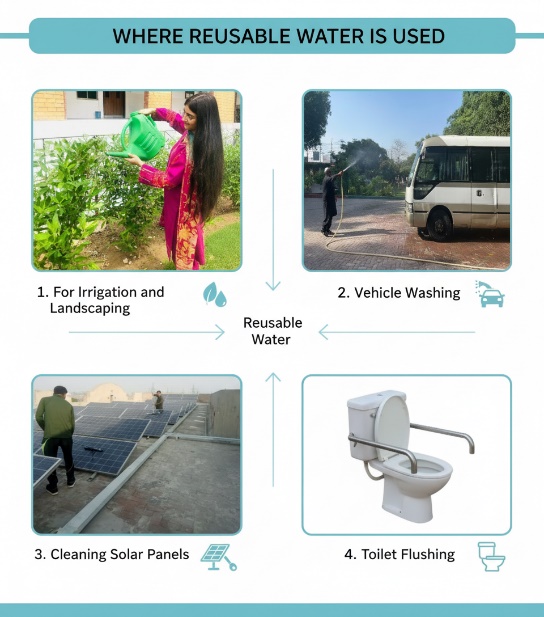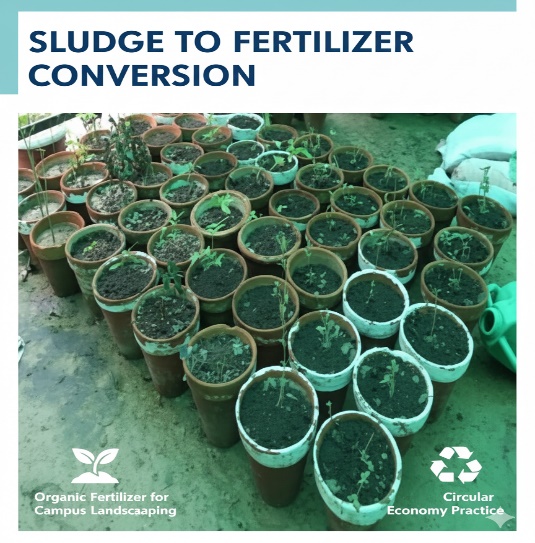WASTEWATER TREATMENT AND REUSE SYSTEM
1. Project Overview
The University of Faisalabad has implemented a comprehensive Wastewater Treatment and Reuse System to ensure efficient utilization of water resources and to promote environmental sustainability. This system focuses on treating sewage and greywater generated across the campus and reusing it for non-potable purposes, such as irrigation and landscaping.
2. Background and Rationale
With the increasing demand for water in educational institutions and limited access to municipal water supply, the university relies primarily on groundwater (bore water) for its operations. To minimize freshwater extraction and prevent wastage, the university established a wastewater management system that filters, treats, and reuses water effectively.
This initiative supports the university’s commitment to UI GreenMetric’s sustainability indicators and aligns with the United Nations Sustainable Development Goal 6 (Clean Water and Sanitation)and SDG 12 (Responsible Consumption and Production)
3. System Design and Process Flow
a. Collection Phase
All wastewater from washrooms, kitchens, and laboratories is collected through a dedicated sewerage network and directed to the main collection pit of the university.
b. Treatment and Filtration Phase
The collected sewage water is processed through a filtration and treatment system, which separates reusable treated water from non-reusable wastewater.
Reusable water: After treatment, the water is clear and safe for reuse in irrigation and plantation areas.
Non-reusable water: Any portion of wastewater unsuitable for reuse is discharged through a separate sewer line into the main collection pit.
c. Reuse Phase
The treated water is distributed through a dedicated pipeline network to irrigate lawns, gardens, and green belts across the campus. This reduces the university’s dependency on fresh groundwater and supports water conservation goals.
d. Sludge Management and Fertilizer Conversion
The remaining solid waste (sludge) obtained from the treatment process is dried naturally and converted into organic fertilizer. This fertilizer is then used in campus landscaping and plantation, promoting a circular waste management model.
Waste Water Treatment and Resue System

Wastewater Handling and Separation Process

Utilization of Treated Wastewater

Sludge Management and Resource Recovery
